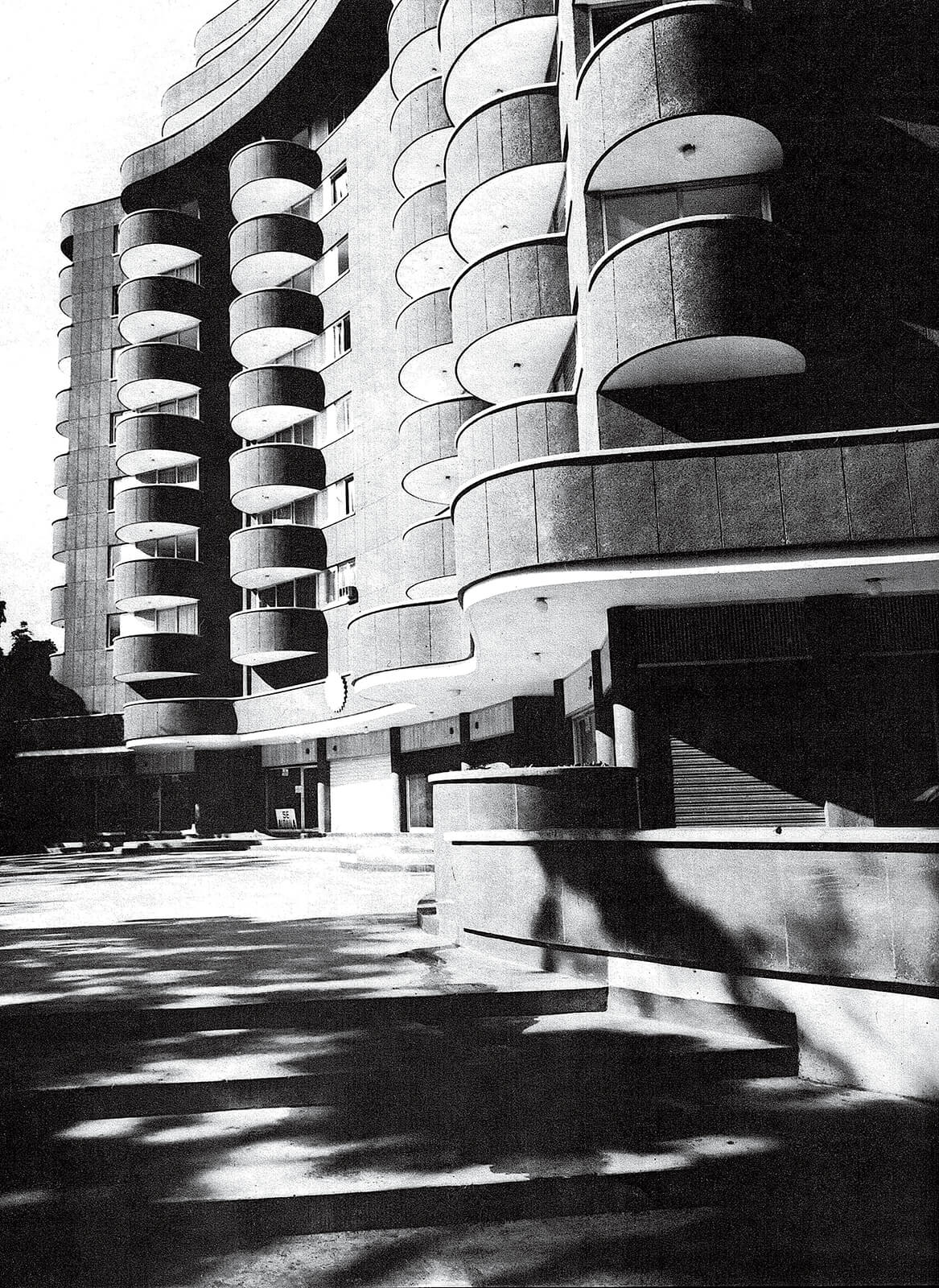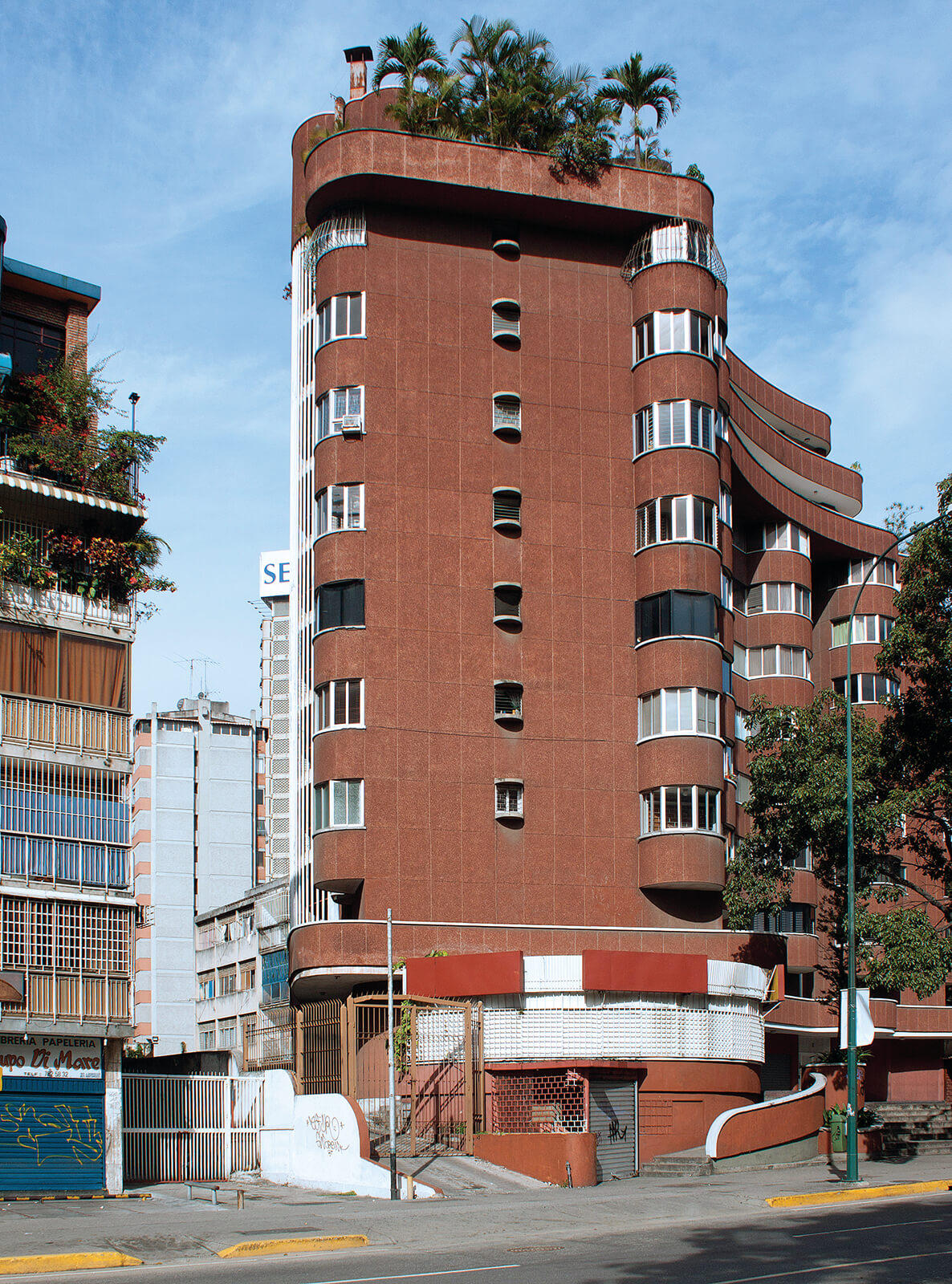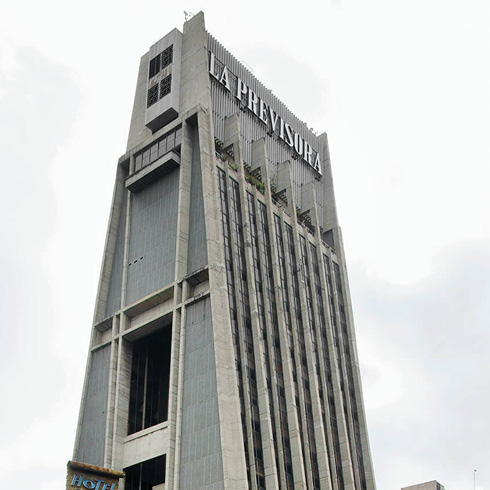YPM
The controversial curved shape and burgundy color characterizing El Camarón (The Shrimp), far from the ra-tionalist precepts of the time when it was designed, along with its contributions to public space, filled the pages of national architectural criticism in the late 60s. Its quality, resulting from its formal coherence and the way the building faces the corner, displays the infrequent risks taken by Mario Breto. Its excellent construction and care for details give its dynamic volume an impeccable and sober finish. Its condition as a free-standing symmetrical building shows the canonical presence of a base, a body and a finish, and calls upon curved geometry, continuous bands and the repetition of cylindrical elements (stairs, balconies and walls) to achieve cohesion of the complex. The standard four-unit floor plan, organized in two blocks of two units each, follows the arc of the volume’s sym-metry without affecting its functionality. The commercial ground floor, protected by the terrace’s overhang, inte-grates into the square/podium on the corner of the lot. Critics categorize El Camaron within local eclecticism, characterized by a formalist vision of architecture anchored in the search for expressive languages derived from the recent past, with an expressionist and Mendelssohnian origin that would give it a certain historicist halo. Additions over time deface what were once clean façades.

plantas

NE-28

NE-27




